Kelp forests host a higher diversity of plants and animals than almost any other ocean community in the world.
A lush, healthy forest of swaying kelp is often indicative of a thriving underwater ecosystem. In the same way that trees provide a multitude of benefits to land-dwelling species, kelp act as a reliable anchor for our aquatic wildlife by sustaining the health and functions of the oceans they serve.
Unfortunately, kelp in our beautiful Victorian waters and across the world are showing alarming signs of decline. Parks Victoria is working with world-leading scientists and passionate volunteers to understand why.
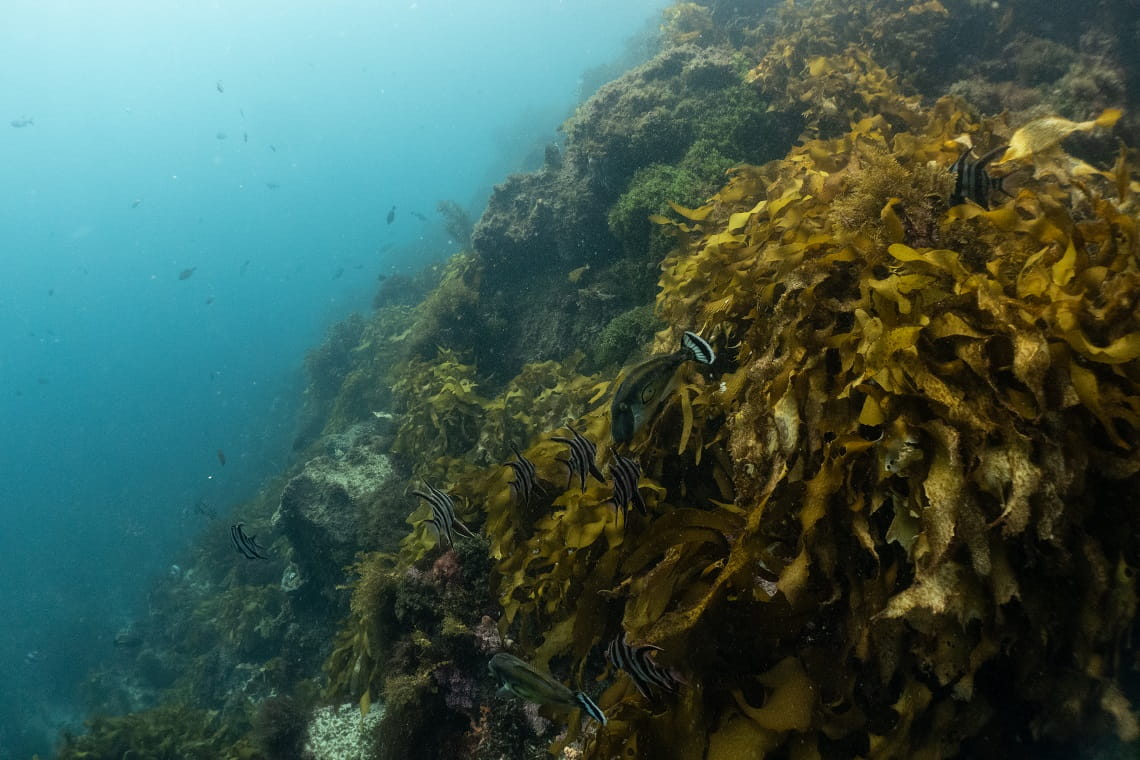
Underwater biodiversity supported by kelp forest, credit Tess Hoinville
Back to basics
Kelp are large brown algae seaweeds that attach themselves to solid forms such as rocks to establish forests that even the most powerful of currents cannot sweep away.
Golden Kelp (Ecklonia radiata) and Crayweed (Phyllospora comosa) grow on most rocky reefs across the Victorian coastline to a depth of around 15 to 30 metres, while Giant Kelp (Macrocystis angustifolia) can be found on the west coast of Victoria and Bull Kelp (Durvillea potatorum) in high water surge zones.
As a self-sustaining organism, kelp can stretch their fronds towards the sun, absorbing its energy to create their own food. They support thousands of lifeforms big and small, which are divided among their complex layers of canopy, understory and forest floor.
They take in minerals from the water including iron, calcium, magnesium, B vitamins, vitamin K, dietary fibre and protein. This makes kelp a tasty and highly nutritious food source for a variety of species that shelter between their blades, as well as humans who love to incorporate it into their cooking. As just one subset of the macroalgae that make up our underwater forests, kelp also support the function and diversity of other seaweeds, which, in turn, support vibrant ecosystems of their own.
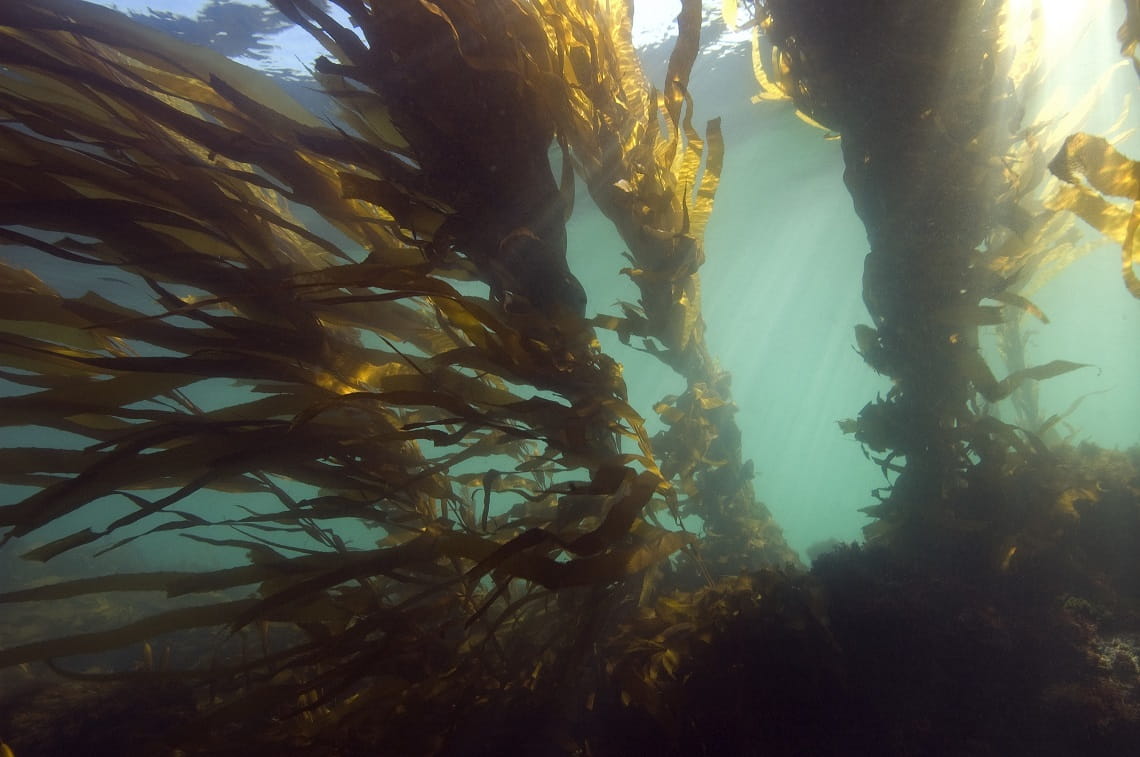
Kelp forest, credit Parks Victoria
The structure of these forests alters their immediate environment by capturing large amounts of carbon, influencing light availability and the flow of water, providing shelter, as well as clean long-term habitat for thousands of species. These include Southern Rock Lobster (Jasus edwardii), Black Lipped Abalone (Haliotis rubra) and Old Wife (Enoplosus armatus).
"Just like the branches of old and established trees, kelp blades spread out and overlap to form a roof or umbrella over the sea floor. As light and oxygen filter through varying levels of midstory and understory, like different floors in an apartment block, kelp play host to thousands of species that can thrive within the complex habitats that form within these three-dimensional ecosystems," notes Michael Sams, Manager of Marine and Coastal Science Programs at Parks Victoria.
"Many fish and invertebrate species use kelp forests as nurseries for their young, leaving thousands of eggs hidden on their blades and under their canopy. Because they are teeming with invertebrates such as marine worms, crabs, snails and sea stars, they are also a natural buffet for larger predators like Rock Lobster, Snapper and Port Jackson Sharks."
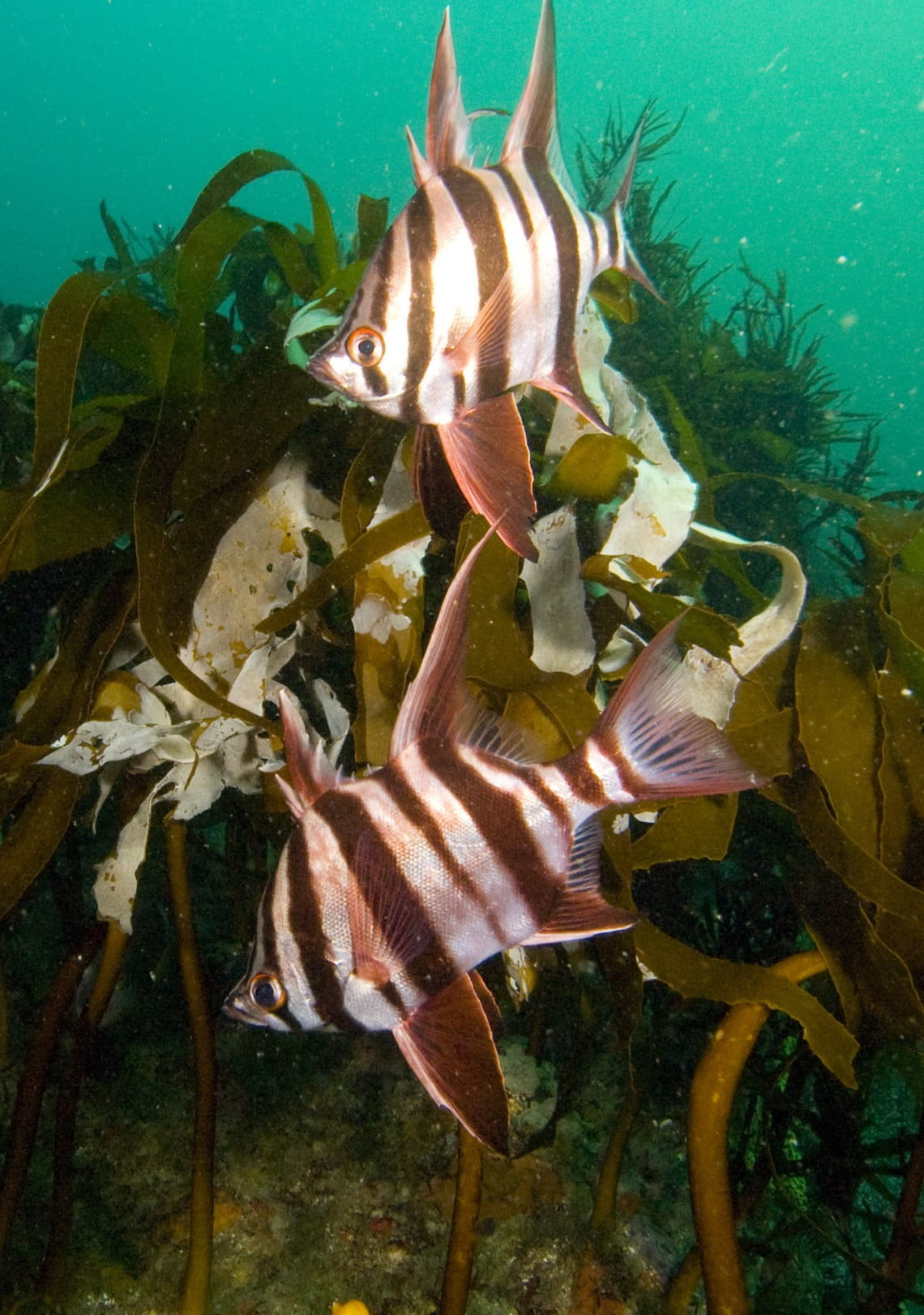
Old Wife, credit Parks Victoria
So vital are kelp forests to humans around the world that a recent global study identified their worth to society is in the billions. When looking at the key genera of kelp that occur in southern Australia - Macrocystis and Ecklonia - and the potential economic value of the fisheries they support; the carbon they pull from the atmosphere; and the nutrient pollution they remove from the water, the researchers found kelp forests in this region alone are valued at US$3.7 billion per year.
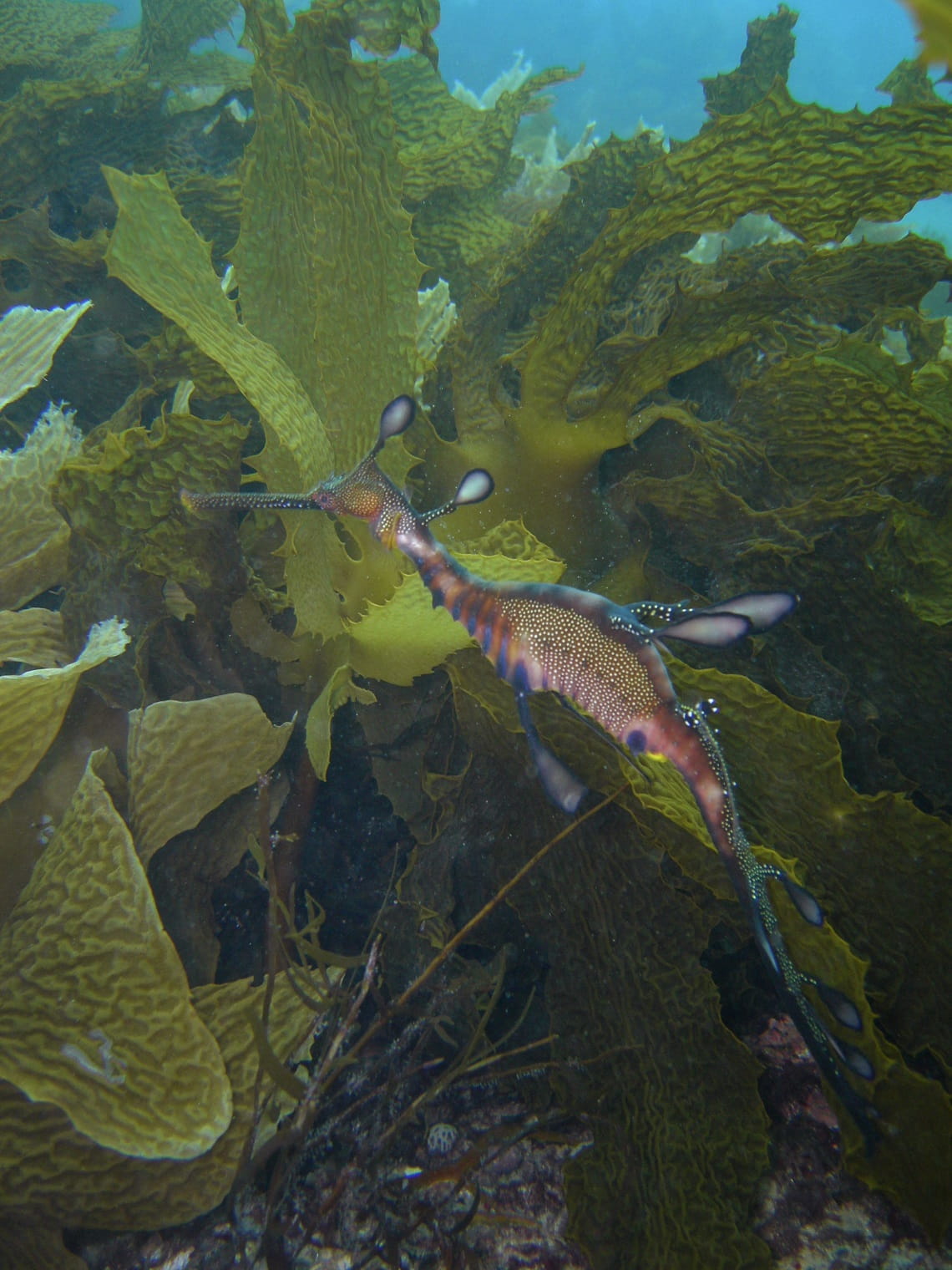
Weedy seadragon, credit Parks Victoria
Why are they declining?
Victoria's kelp forests are found from the west to the east of the state, from Discovery Bay to Cape Howe, and in all marine national parks and sanctuaries where there is rocky reef.
"Following a series of events between the late 1990s to early 2000s, including the Millennium drought; prolonged high temperatures; and a subsequent decrease in water nutrient levels, kelp forests experienced a significant period of decline in Port Phillip Bay," Michael explains.
"Not long after this, sedentary populations of purple sea urchin (Heliocidaris erythrogramma) shifted to an active foraging mode, where they began to consume large amounts of macroalgae, including kelp. We believe a significant decrease of their favourite food source during the drought - drift algae - triggered this change in behaviour."
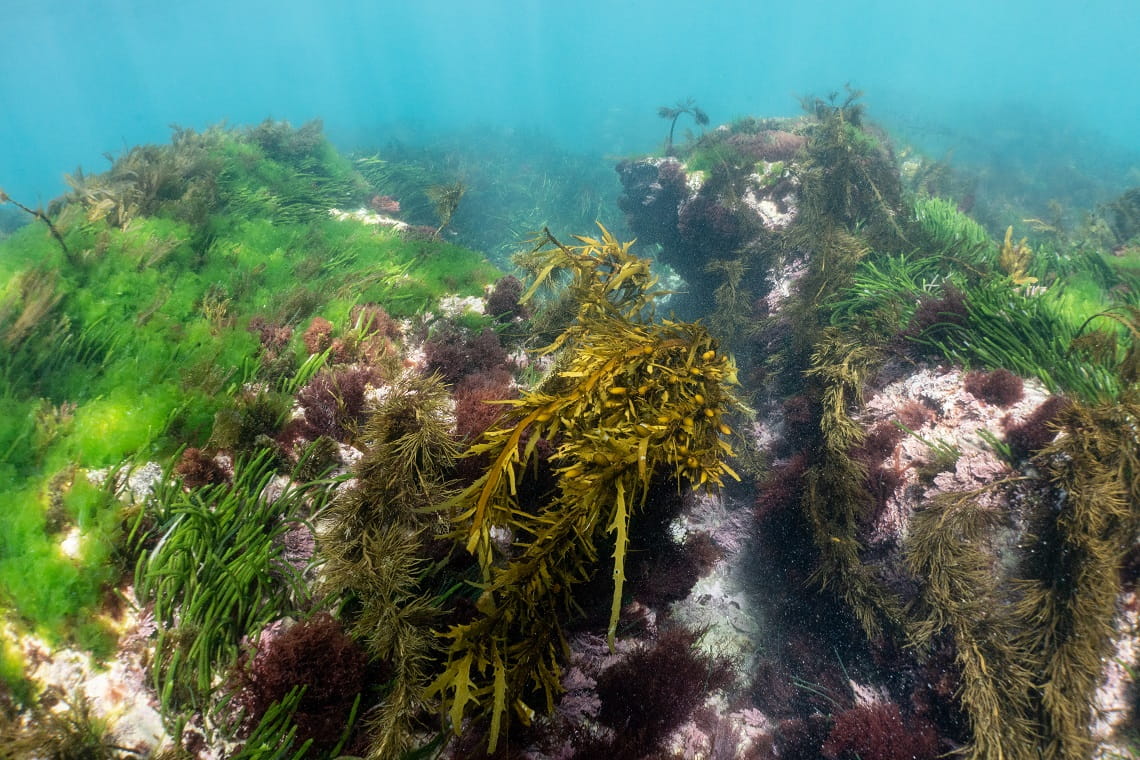
Urchins at Port Phillip Heads Marine National Park, credit Tess Hoinville
The now active urchin species moved from reef to reef, overgrazing on large areas of macroalgae habitat and their gluttonous munching left behind large areas of bare ocean floor called 'urchin barrens'.
"Within Port Phillip Bay alone, data shows urchins became 250 to 420 per cent more abundant in the early 2000s."
In Eastern Victoria, we're also seeing a gradual spread and increased density of long-spined urchins (Centrostephanus rodgersii) to the west of the state, as well as an extension of the East Australian Current following rising ocean temperatures under climate change.
Urchins have since turned some of our most luscious and productive habitats statewide, including in marine protected areas like Beware Reef Marine Sanctuary, into wastelands where they continue to linger and prevent the establishment of new growth.
Looking to the future, a recent study co-authored by Deakin University, Parks Victoria and Monash University found increasing temperatures; intensifying wave energy; ongoing increases in urchin populations; and changes in current patterns will lead to a 62 to 94 per cent decrease of Golden Kelp and Crayweed coverage across Victoria by 2090.
So, what can we do to prevent this?
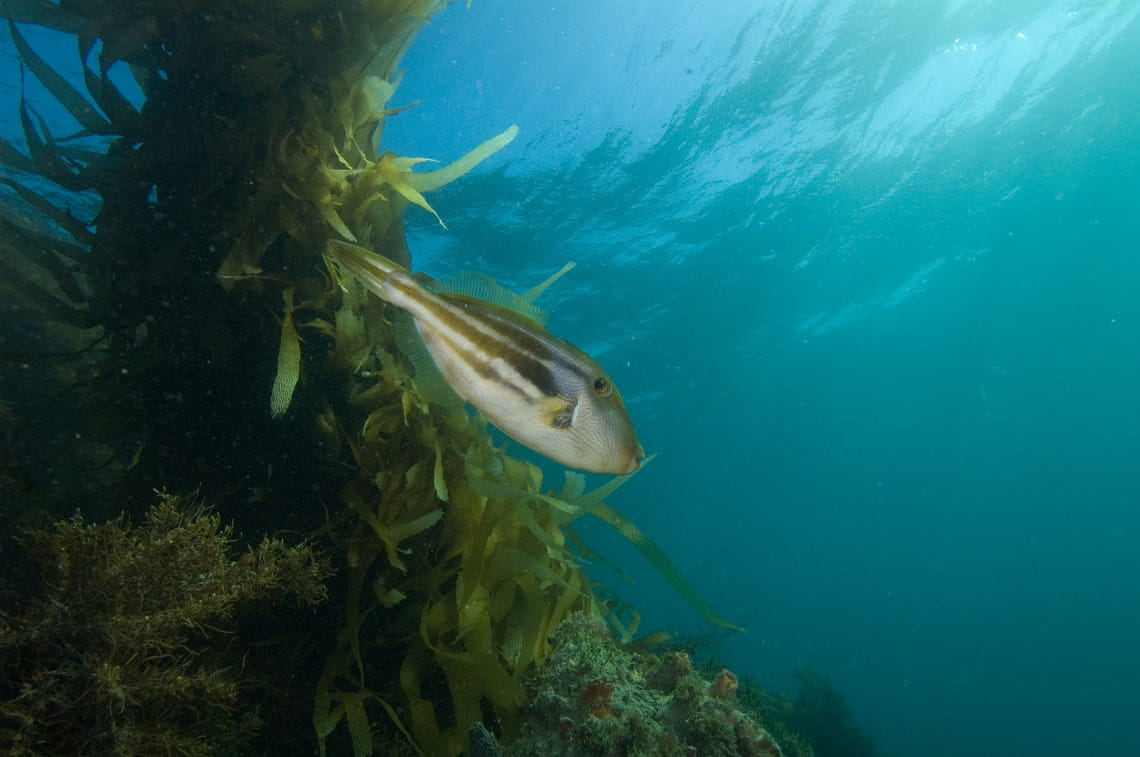
Sixspine leatherjacket, credit Museums Victoria
How are we supporting their recovery?
"If we continue to lose kelp forests and the ecosystem services their canopies provide, we could lose critical home and habitat for thousands of species. We're already recording declines in plant and animal diversity within impacted areas of forest, particularly for those species that rely on kelp for shelter and food," Michael says.
"Without kelp forests acting as a breakwater during storms, slowing down wave energy as water travels through their canopies, we could see also higher rates of coastal erosion on our shores. If we lose too much kelp forest in our urban coasts, we could also see a decline in water quality."
At Jawbone, Ricketts Point, Beware Reef and Point Cooke Marine Sanctuaries, Parks Victoria is working with researchers and volunteers to restore more than a decade of significant kelp loss.
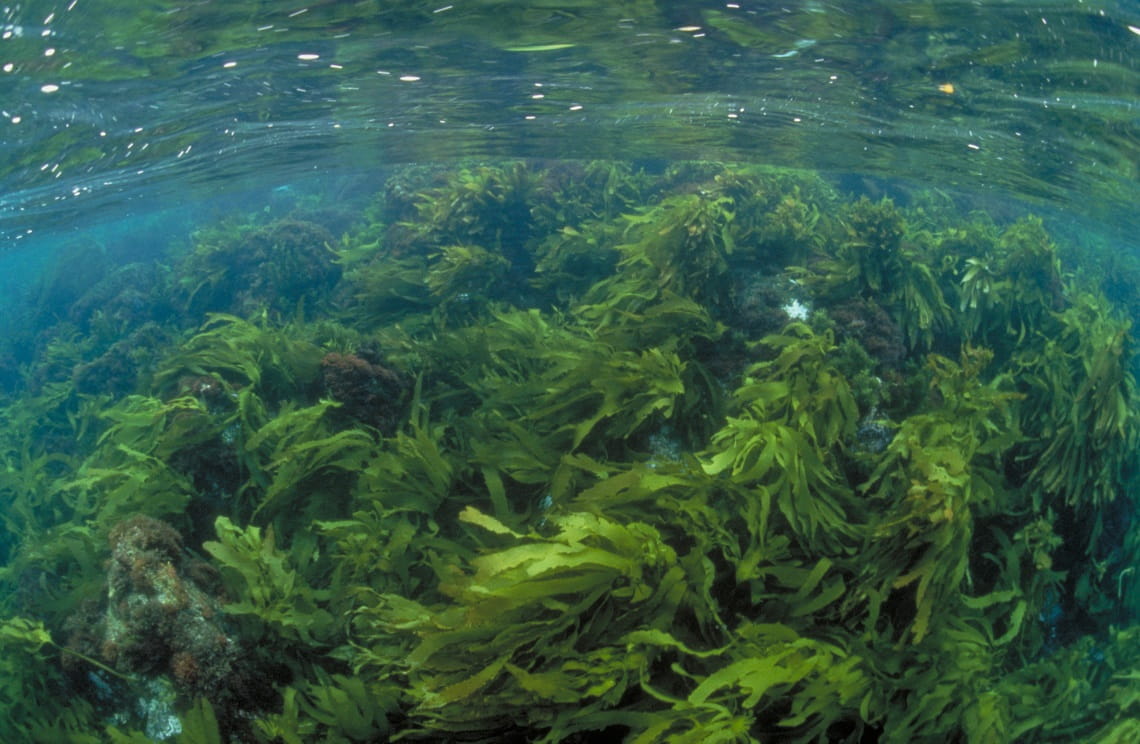
Macroalgae, credit Parks Victoria
"Our aim is to prevent further loss of kelp forest. We hope this intervention will support greater resilience to warming waters and other increasing pressures under climate change," Michael says.
At Beware Reef Marine Sanctuary:
- Since March 2019, more than 100,000 long-spined urchins have been culled to protect this unique reef and the species that call it home. Parks Victoria engages expert contractors using specially designed hand-tools ensuring quick, humane culling.
- This work allows marine vegetation, like kelp forests, to regrow and provide habitat for the more than 350 species of plants and animals that live in Beware Reef.
- This project has been funded by the Victorian Government's Biodiversity Response Planning program and contributes to a statewide initiative - in partnership with the University of Melbourne, Deakin University and volunteers - to manage overabundant urchins in marine protected areas.
Across Ricketts Point, Jawbone and Point Cooke Marine Sanctuaries:
- We have recently partnered with the University of Melbourne, Deakin University and The Nature Conservancy on the Golden Kelp Restoration Project.
- Over this two-year project, urchin culling will be conducted across Jawbone Marine Sanctuary in Williamstown and Ricketts Point Marine Sanctuary in Beaumaris to allow the recovery of kelp forest and macroalgae habitats.
- Thanks to funding from the Victorian Government, this project involves reducing urchin numbers down to levels that will promote recovery of macroalgae, including kelp. It also includes active restoration trials, such as the translocation and culturing of baby kelp, grown in a lab to be "planted" back into the ocean at various restoration states.
- Complementing this, we have also received funding through the Victorian Government's Port Phillip Bay Fund, which is supporting ongoing urchin reduction activities at Jawbone and Point Cooke Marine Sanctuaries.
- Our rangers at North Port Phillip Bay have also been working closely with Jawbone Marine Care Group and Ricketts Point Marine Care Group to undertake urchin reductions in these marine sanctuaries.
As a result of this collective action, we're starting to see positive, early signs of the return of large macroalgae and invertebrate species in the areas we have significantly reduced urchin densities, particularly in previously barren areas.






